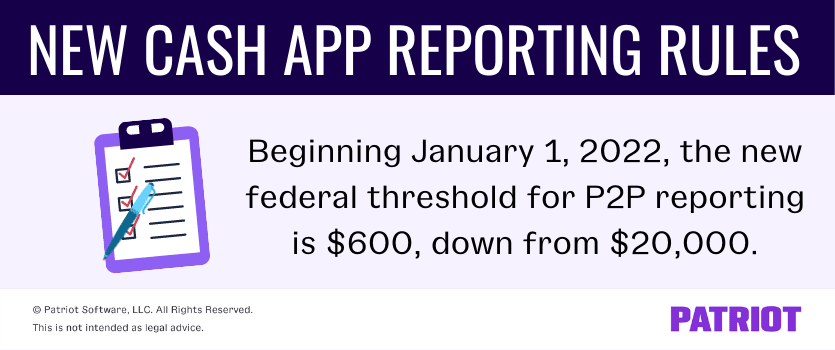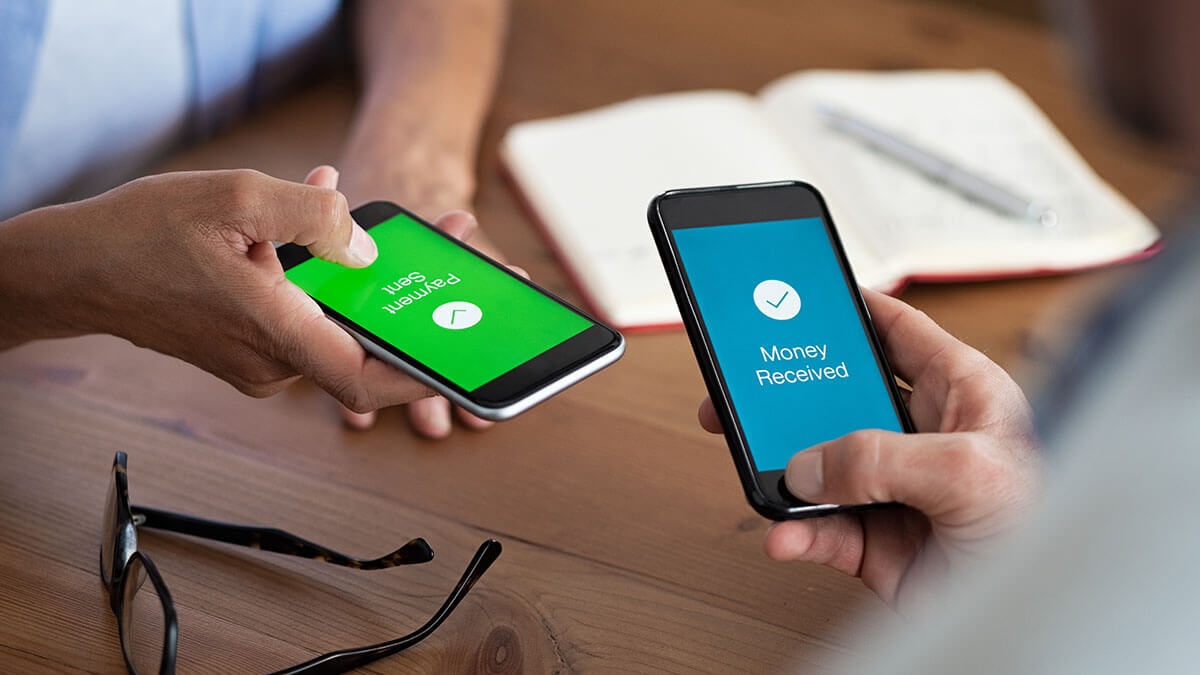Over 75% of consumers use payment service apps. And if you’re part of the growing percentage of small businesses (23% in 2019, to be exact) that accept peer-to-peer (P2P) payments, you should know about the new IRS cash app reporting rules.
So, what exactly is a P2P transfer? What are the 2022 P2P reporting rules, and how will they impact your business? Read on for the scoop.
What is a P2P transfer?
The payment method game is always changing. First, there was cold hard cash. Then came plastic. Now, there are a number of digital payment options available, including peer-to-peer money transfers (also called third-party network transactions).
Consumers and businesses send these money transfers directly from their bank account, debit card, or credit card through a P2P app. P2P apps are also called payment service apps, payment apps, and cash apps.
Common P2P platforms you can use to transfer money digitally include:
- Apple Pay
- Cash App
- PayPal
- Venmo
The company (e.g., PayPal) that sends the money is known as the “third-party settlement organization.” The third-party settlement organization is responsible for reporting certain business P2P transfers to the IRS.
Zelle is another popular money transferring system. But according to their website, “Zelle® does not report any transactions made on the Zelle Network® to the IRS.”
Current cash app reporting rules
Businesses that make certain payments (e.g., nonemployee compensation) typically prepare a 1099-NEC or 1099-MISC to report the payment. Likewise, businesses, freelancers, or other self-employed individuals who receive 1099 payments receive a 1099 form. But, that’s not the case with cash app payments.
If your business sends or receives money via P2P transactions, you are not responsible for reporting the transfers to the IRS on a 1099. Instead, the responsibility goes to third-party settlement organizations.
Third-party settlement organizations report qualifying business P2P payments on Form 1099-K, Payment Card and Third Party Network Transactions. The organization sends copies of Form 1099-K to the IRS, the state tax department, and the payee and keeps a copy for their records. Form 1099-K has a deadline of January 31 each year.
Currently, third-party settlement organizations only report payments on 1099-K if both of the following conditions are met:
- The transactions exceed $20,000
- The aggregate number of transactions exceeds 200
So if you’re on the receiving end of cash app payments, you will only get a Form 1099-K if you meet the above thresholds. But, that all changes beginning in 2022…
New cash app reporting rules
The American Rescue Plan, which was signed into law on March 11, 2021, made changes to the cash app tax reporting threshold of $20,000 and the number of transactions.
Beginning January 1, 2022, the new federal threshold for P2P reporting is $600, down from $20,000. And, there is no longer a transaction minimum, down from 200.

New cash app reporting rules only apply to transactions that are for goods or services. This applies to businesses and any other individuals making sales of $600 or more through a P2P platform.
Long story short: If you make goods or services sales through a P2P platform of $600 or more in 2022, you should receive Form 1099-K from the third-party settlement organization in early 2023.
What is the purpose of the change?
The IRS wants to make sure they’re getting their cut of taxes. Some businesses or sellers who receive money through cash apps may not have been reporting all the income.
By lowering the reporting threshold from $20,000 to $600, the IRS will get that transaction information from the cash app platform.
How do these changes affect you?
Again, businesses are not responsible for reporting P2P money transfers on Form 1099-K. The platform you use to transfer money (e.g., Venmo) is responsible.
So, how exactly will this lowered reporting threshold impact you? You will receive a 1099-K form from each cash app you received $600 or more through.
Let’s say you receive $12,000 in goods and services transactions on Venmo and $5,000 on PayPal. You would receive two separate 1099-K forms (one from each platform) reporting your annual transaction amount.
Here are a few tips to keep in mind for a smoother transition:
- Open separate P2P accounts for business and personal use to make reporting easier
- Be ready to provide your taxpayer identification number (e.g., Employer Identification Number) to the cash app so they can report it on Form 1099-K
- Keep detailed records of your own to compare to the information you receive on Form 1099-K



